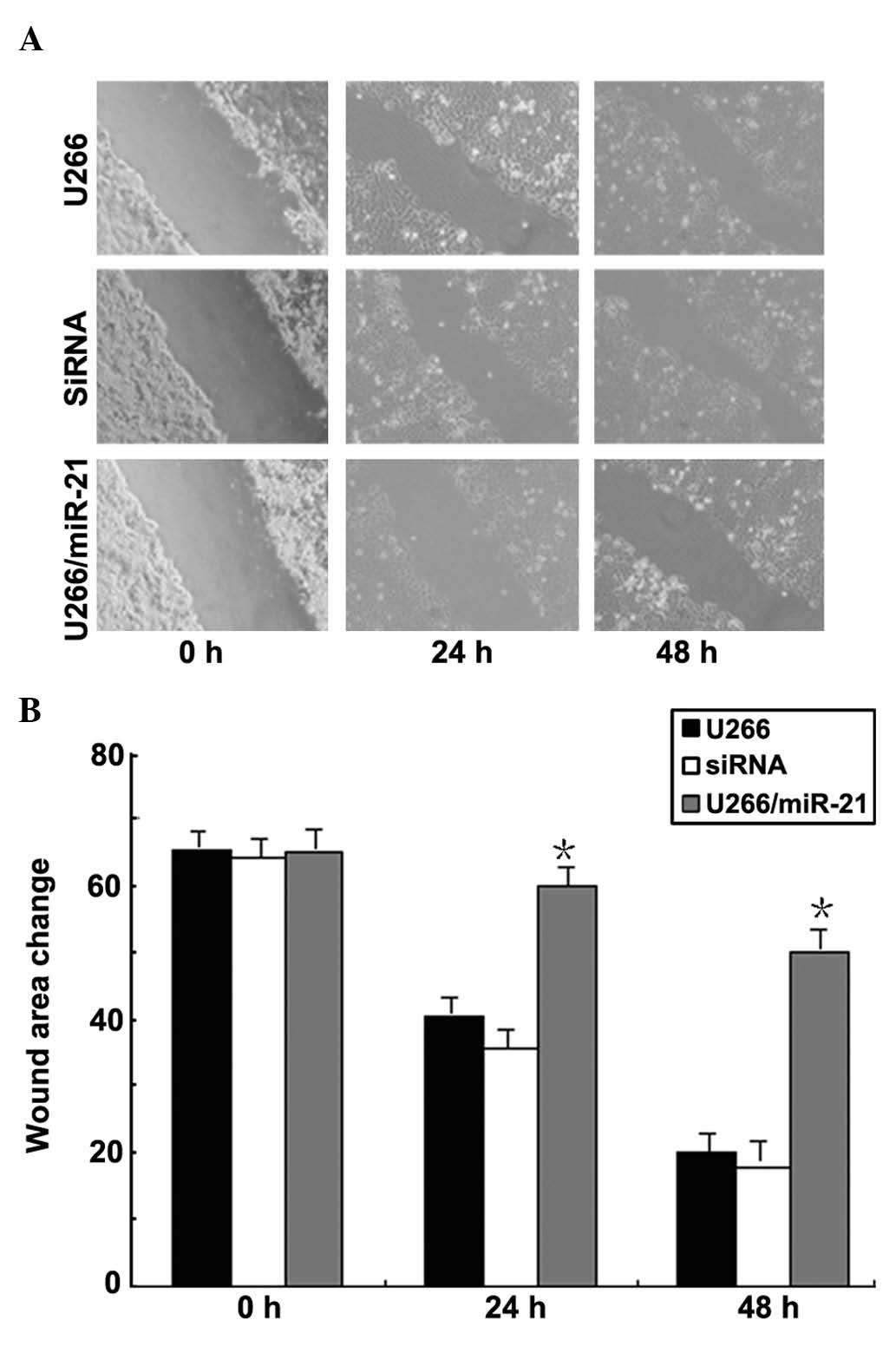Downregulation of Sprouty homolog 2 by microRNA-21 inhibits proliferation, metastasis and invasion, however promotes the apoptosis of multiple myeloma cells
- Authors:
- Published online on: March 30, 2015 https://doi.org/10.3892/mmr.2015.3567
- Pages: 1810-1816
-
Copyright: © Wang et al. This is an open access article distributed under the terms of Creative Commons Attribution License [CC BY_NC 3.0].
Metrics: Total
Views: 0 (Spandidos Publications: | PMC Statistics: )
Total PDF Downloads: 0 (Spandidos Publications: | PMC Statistics: )
Abstract
The aim of the present study was to assess the effects of sprouty homolog 2 (SPRY2) gene regulation by miR-21 on the occurrence, development and tumor metastasis in multiple myeloma (MM). The miR‑21 expression lentiviral vector (LV)‑anti‑miR‑21 and a liposome transfection method were used to screen MM cell lines with stable silent SPRY2. Real‑time quantitative polymerase chain reaction (PCR) and western blot analyses were used to detect SPRY2 expression and miR‑21 protein expression levels. An MTT assay was used to assess cell proliferation. Flow cytometry was used for analysis of cell cycle. A scratch test/wound healing assay was used to detect the cell migration ability. A Transwell assay was used to detect the cell invasion ability. Real‑time quantitative PCR and western blot analysis showed that in the MM cell lines with high endogenous miR‑21 expression (RPMI8226 and KM3), SPRY2 expression was significantly lower. Conversely, in the U266 cell line with low endogenous miR‑21 expression, SPRY2 expression was significantly higher, and the gray values of miR‑21 and SPRY2 protein in the respective cell lines showed statistically significant differences (P<0.01). Following transfection of U266 cells, the expression of miR‑21 in the U266/LV‑anti‑miR21 lentiviral multiplicity of infection (MOI) 20 group and ‑MOI 40 group decreased significantly compared with that in the untransfected U266 group (P<0.05). SPRY2 protein expression in U266 cells transfected with miR‑21 mimics was significantly reduced compared with that in the non‑transfected (untreated) group and the negative control‑transfected group (P<0.01). An MTT assay showed that compared with the non‑transfected and negative control groups, the cell growth rate as well as the proliferation rate were significantly decreased in the transfection group 48, 72 and 96 h after transfection (P<0.01). Flow cytometric analysis showed that 48 and 72 h after transfection of U266 cells with miR‑21 mimics, the apoptotic rates were (24.7±1.97 and 38.6±1.56%) in the U266 group, (27.3±1.72 and 37.3±1.59%) in the siRNA group and (12.7±1.27 and 22.1±1.63%) in the U266/miR‑21 group. Compared with the two control groups, the apoptotic rate in the U266/miR‑21 group was significantly decreased and the G0/G1 phase cell population was significantly reduced (P<0.05). Scratch experiments showed that the cell migration ability was significantly reduced in the transfection group 24 and 48 h after transfection (P<0.05). A Transwell invasion assay confirmed that the number of U266 cells which migrated through a Matrigel‑covered polyphosphate membrane significantly decreased in the transfection group 24 and 48 h after transfection. The cell‑penetrating ability was also significantly decreased (P<0.05). In conclusion, the downregulation of SPRY2 gene expression mediated by miR-21 promotes the proliferation and invasion of MM cells in vitro, suggesting that miR-21 may be a novel potential molecular therapeutic target in the treatment of MM.

















